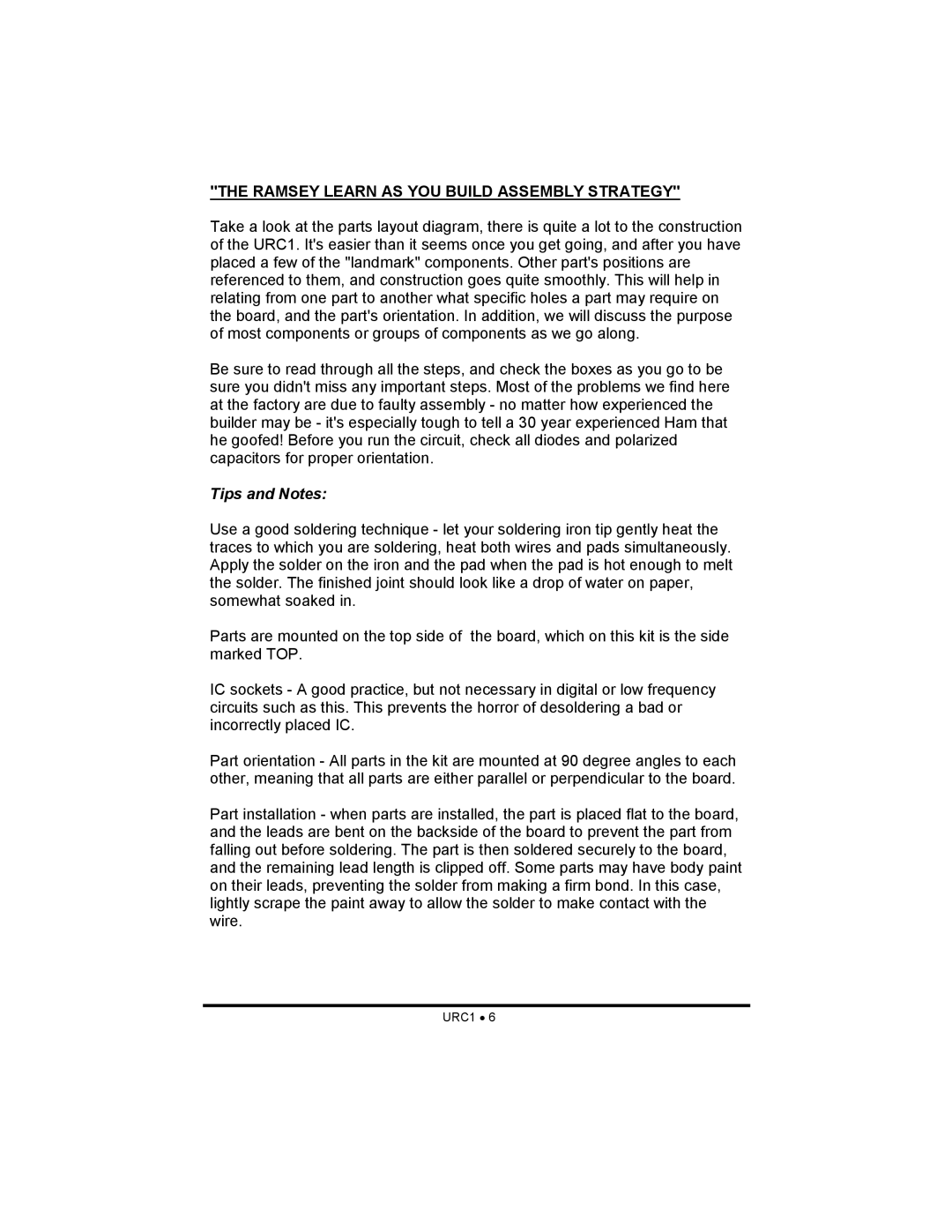"THE RAMSEY LEARN AS YOU BUILD ASSEMBLY STRATEGY"
Take a look at the parts layout diagram, there is quite a lot to the construction of the URC1. It's easier than it seems once you get going, and after you have placed a few of the "landmark" components. Other part's positions are referenced to them, and construction goes quite smoothly. This will help in relating from one part to another what specific holes a part may require on the board, and the part's orientation. In addition, we will discuss the purpose of most components or groups of components as we go along.
Be sure to read through all the steps, and check the boxes as you go to be sure you didn't miss any important steps. Most of the problems we find here at the factory are due to faulty assembly - no matter how experienced the builder may be - it's especially tough to tell a 30 year experienced Ham that he goofed! Before you run the circuit, check all diodes and polarized capacitors for proper orientation.
Tips and Notes:
Use a good soldering technique - let your soldering iron tip gently heat the traces to which you are soldering, heat both wires and pads simultaneously. Apply the solder on the iron and the pad when the pad is hot enough to melt the solder. The finished joint should look like a drop of water on paper, somewhat soaked in.
Parts are mounted on the top side of the board, which on this kit is the side marked TOP.
IC sockets - A good practice, but not necessary in digital or low frequency circuits such as this. This prevents the horror of desoldering a bad or incorrectly placed IC.
Part orientation - All parts in the kit are mounted at 90 degree angles to each other, meaning that all parts are either parallel or perpendicular to the board.
Part installation - when parts are installed, the part is placed flat to the board, and the leads are bent on the backside of the board to prevent the part from falling out before soldering. The part is then soldered securely to the board, and the remaining lead length is clipped off. Some parts may have body paint on their leads, preventing the solder from making a firm bond. In this case, lightly scrape the paint away to allow the solder to make contact with the wire.
URC1 • 6
